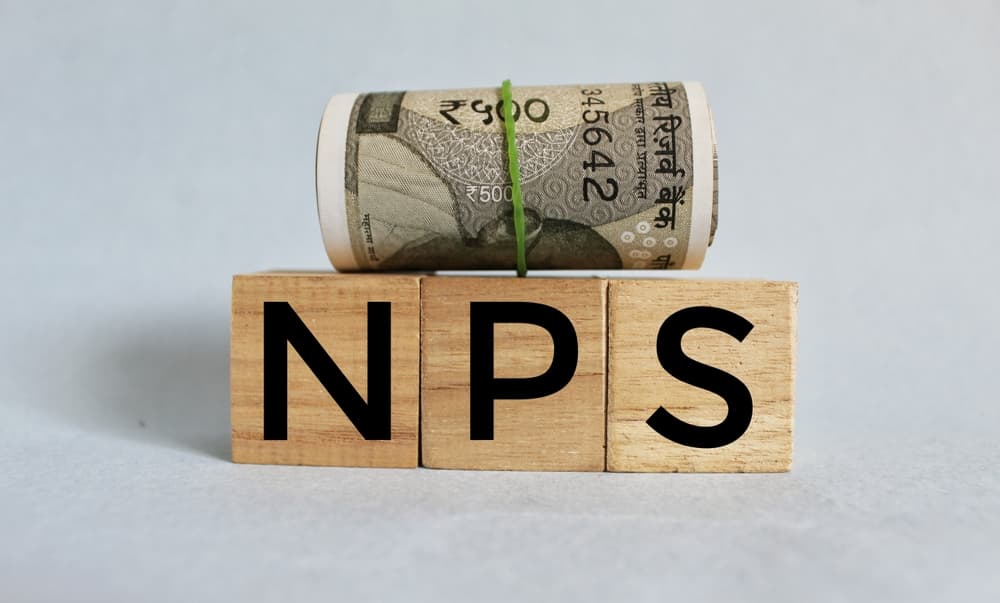NPS Deduction: Can You Avail Of This Benefit In New Tax Regime?
The new regime has lower tax rates and fewer slabs; hence, it has limited the previously available exemptions and deductions, such as those under Section 80C in the old regime.
The new regime has lower tax rates and fewer slabs; hence, it has limited the previously available exemptions and deductions, such as those under Section 80C in the old regime.

NPS deduction
Advertisement
The National Pension System (NPS) is a government-sponsored small savings scheme for retirement and is open to all Indian citizens aged 18-70, whether salaried or self-employed. NPS offers tax benefits up to Rs 2 lakh in a financial year for contributions to the scheme under the old tax regime, besides pension at retirement and an opportunity to create wealth. For instance, it allows deductions up to Rs 1.5 lakh under Section 80C and an additional deduction of up to Rs 50,000 under Section 80CCD(1B) of the Income-tax Act, 1961, for NPS contributions, making it one of the most tax-efficient investment schemes for retirement.
Also Read: Cybersecurity Threats: 7 Things Senior Citizens Can Do To Stay Safe
Advertisement
NPS subscribers can also claim deductions for contributions to the pension scheme under the new tax regime. However, the deductions are only allowed for the employer’s part, up to 10 per cent of the employee’s basic salary under Section 80CCD (2) of the Income-tax, Act, 1961. Thus, employers can help save a lot on taxes if they agree to contribute up to 10 per cent of their employees’ basic salary to NPS on their behalf. It is important to note that the new regime doesn’t allow the standard deduction of Rs 50,000 under section 80CCD (1B) of the Act.
The new regime has lower tax rates and fewer slabs; hence, it has limited the previously available exemptions and deductions, such as those under Section 80C. However, the tax authorities gave some relief under Section 80CCD (2) for employer’s contributions to NPS.
Advertisement
On the other hand, Section 80CCD (1B) refers to the additional deduction of up to Rs 50,000 for NPS contributions under the old tax regime. This is over and above the Rs 1.5 lakh deduction available under Section 80CCCD (1) under the old tax regime. These two tax provisions allow taxpayers to claim deductions up to Rs 2 lakh in a financial year. Individual taxpayers can claim these deductions while filing their income tax returns (ITR) under the old tax regime.
Also Read: Free Pilgrimage For Seniors: Maharashtra Govt Lists Popular Sites Under Teerth Darshan Scheme
The National Pension System (NPS) also offers investors Tier 1 and Tier 2 accounts. Tier 1 accounts have a fixed lock-in period until the subscriber reaches 60. However, they allow partial withdrawals under certain conditions. Contributions to Tier 1 accounts qualify for deductions under Section 80CCD (1) and Section 80CCD (1B), or up to Rs 2 lakh.
In the case of Tier 2 accounts, the subscriber can withdraw the funds anytime. It is primarily used as an additional investment scheme. However, it is a voluntary account and is allowed to open only when the individual has a Tier 1 account. Additionally, only government employees can claim an income tax deduction in NPS Tier II accounts. Private-sector employees do not have tax benefits, and gains are taxable at respective slab rates.
Advertisement
The National Pension System (NPS) is a government-backed small savings scheme for retirement; it offers various tax benefits during the contribution phase and at maturity.
The National Pension System (NPS) offers two types of accounts—Tier I and Tier II—for monthly pensionsand regular investments for wealth creation, with varying features in both.
The government is reportedly considering amending the National Pension System by the end of the year to ensure that employees get at least 40-45 per cent of their last drawn salary as retirement payout
Get all the latest stories delivered to your inbox
Advertisement
Get all the latest stories delivered to your inbox